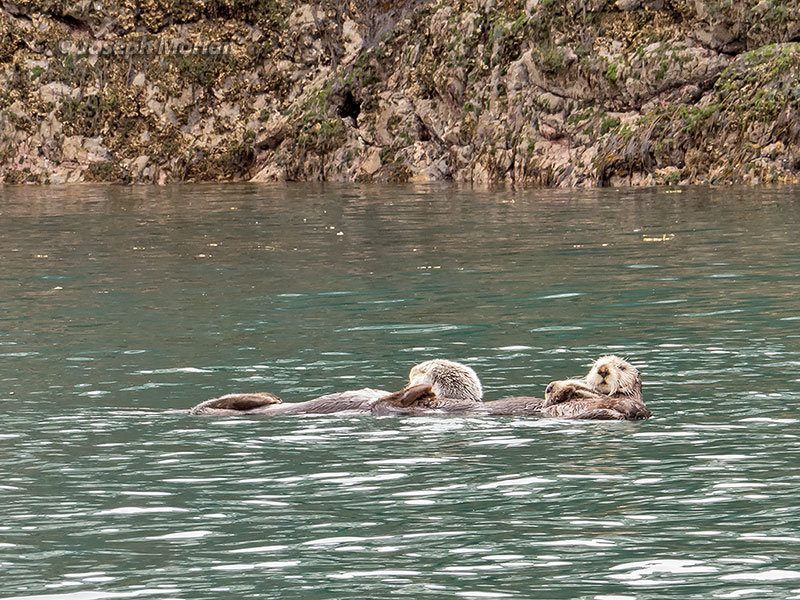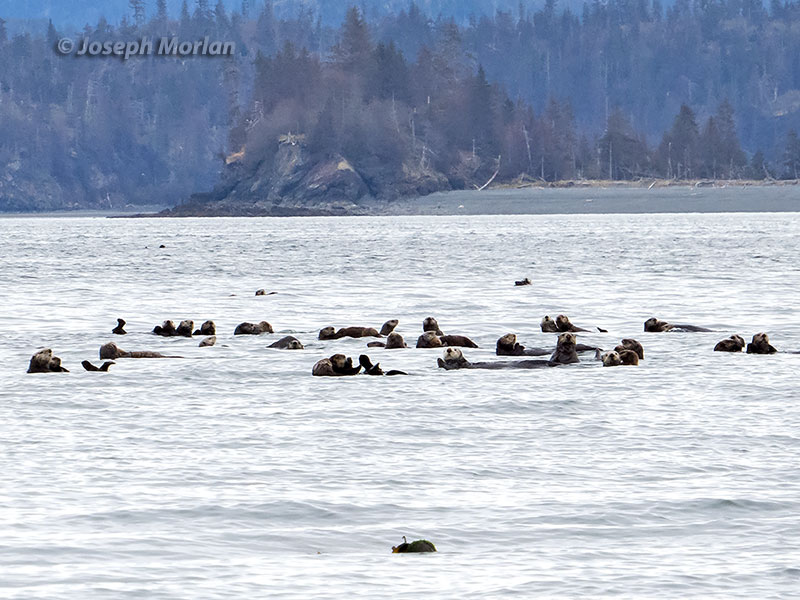

This race inhabits the Aleutian Islands south to coastal Oregon. It was described in 1991 based on a combination of short skull, long nose, and long jaw. Apparently Karl W. Kenyon, in whose honor this population was named, was never convinced this subspecies was valid. Other races are found in Asia and California. Famous for their dense fur, these endangered otters were hunted to near extinction in the 19th Century. The northern population E. l. kenyoni has suffered declines of up to 90% with some recent decline attributed to Killer Whale predation. However the Cook Inlet/Kodiak population has remained stable or increased in recent years. They seemed to be doing very well on our visit. Canon PowerShot SX50 HS.
References:
Doroff, A. & Burdin, A. 2015. Enhydra lutris. The IUCN Red List of Threatened Species 2015: e.T7750A21939518. http://dx.doi.org/10.2305/IUCN.UK.2015-2.RLTS.T7750A21939518.en. Downloaded on 30 July 2017.
Wilson, D. E., M. A. Bogan, R. L. Brownell, Jr., A. M. Burdin, and M. K. Maminov. (1991) Geographic variation in sea otters, Enhydra lutris. J. Mammal. 72(1):22-36.